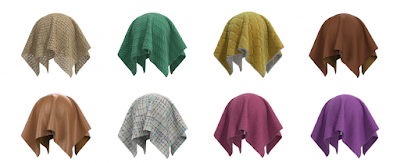Textile Transformation: Textile Enzymes Redefining Industry Standards
 |
| Textile Transformation |
In
the realm of textile manufacturing, innovation is a driving force behind
progress. Among the myriad advancements reshaping the industry, the role of
textile enzymes stands out as a transformative agent. These biological
catalysts, derived from natural sources or produced through biotechnological
processes, are revolutionizing the way fabrics are processed, enhancing
performance, sustainability, and efficiency. As textile manufacturers
increasingly embrace the use of enzymes, they are witnessing a paradigm shift
that is redefining industry standards.
Enzymes are proteins that act as biological catalysts, speeding up chemical reactions without being consumed in the process. In the context of textiles, enzymes play a crucial role in various stages of fabric processing, from pre-treatment to finishing. One of the most significant applications of Textile Enzymes is in the pre-treatment of fibers and fabrics. Enzymatic processes such as desizing, scouring, and bio-polishing help remove impurities, enhance absorbency, and improve the overall quality of the textile substrate.
Desizing, for example, involves the removal of starch-based sizing agents applied to yarns and fabrics during the weaving process. Traditionally, desizing was achieved through harsh chemical treatments that posed environmental and safety concerns. However, enzymatic desizing offers a more sustainable alternative, effectively breaking down starch molecules into soluble fragments without the need for harsh chemicals. This not only reduces water and energy consumption but also minimizes the release of pollutants into the environment.
Similarly, enzymatic scouring replaces traditional alkali treatments used to remove waxes, pectins, and other impurities from natural fibers like cotton and linen. By utilizing enzymes such as pectinases and lipases, textile manufacturers can achieve thorough and gentle cleaning without compromising fiber integrity. This not only improves the dyeing and finishing processes but also enhances the softness and handfeel of the finished fabric.
In addition to pre-treatment processes, textile enzymes are also widely used in finishing applications to impart desired properties to the fabric. Bio-polishing, for instance, involves the removal of protruding fibers and surface fuzz to create a smoother, more lustrous surface. This process, typically carried out on cotton fabrics, enhances their appearance, handfeel, and dyeing properties. By using enzymes such as cellulases, manufacturers can achieve consistent and reproducible results while minimizing the risk of damage to the fabric.
Moreover, textile enzymes are instrumental in achieving sustainable and eco-friendly solutions in the industry. As consumer demand for environmentally conscious products continues to rise, textile manufacturers are under increasing pressure to adopt sustainable practices throughout the supply chain. Enzymatic processes offer a green alternative to traditional chemical treatments, reducing the use of harsh chemicals, conserving water and energy, and minimizing waste and pollution.
Furthermore, the adoption of textile enzymes is driving innovation and differentiation in the marketplace. By leveraging the unique properties of enzymes, manufacturers can develop fabrics with enhanced performance characteristics, such as moisture management, odor control, and wrinkle resistance. These value-added features not only meet the evolving needs of consumers but also enable brands to differentiate their products in a competitive market landscape.
Textile enzymes are playing a pivotal role in transforming the textile industry and redefining industry standards. From pre-treatment to finishing, these biological catalysts offer a sustainable, efficient, and effective alternative to traditional chemical processes. By harnessing the power of enzymes, textile manufacturers are not only improving the quality and performance of their products but also contributing to a more sustainable and environmentally friendly future for the industry.



Comments
Post a Comment